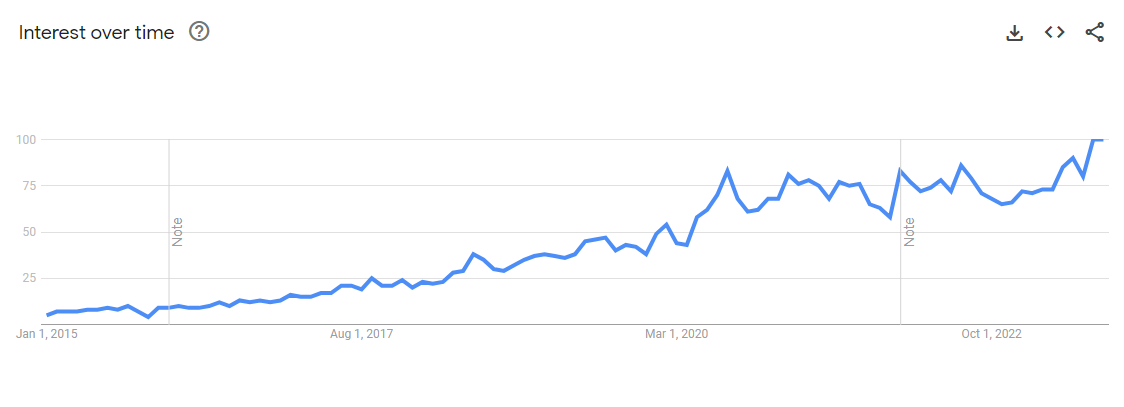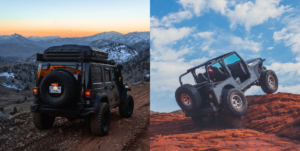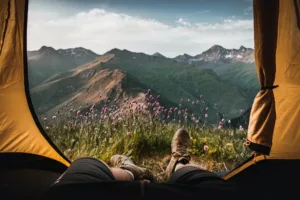Overlanding, a blend of adventure and exploration, has taken the travel world by storm. But is it just a passing trend or a genuine shift in how we experience the great outdoors? Dive into these revealing overlanding statistics to uncover the story behind the surge.
Key Overlanding Statistics for 2023
Popularity of Overlanding: Overlanding has seen a significant rise in popularity over the past few years. In 2023, there was a 20% increase in overlanding activities compared to the 2022 year. This growth can be attributed to the desire for outdoor adventures and the rise of remote work, allowing more people to travel while working. The following research will break down the overlanding statistics for the past year.
Table of Contents
Overlanding Vehicle Sales: The sale of overlanding vehicles, especially 4x4s and off-road campers, has surged. There was a 15% increase in sales in 2023 compared to 2022. This indicates that more people are investing in vehicles that can handle rugged terrains and extended trips. The overlanding vehicle market size is estimated to grow from $14.9 billion in 2022 to $16.1 billion in 2023 at a compound annual growth rate (CAGR) of 8%. By 2027, the off-road vehicle market share is anticipated to achieve a value of $21.06 billion at a CAGR of more than 6%. – Additional overlanding statistics on vehicles here
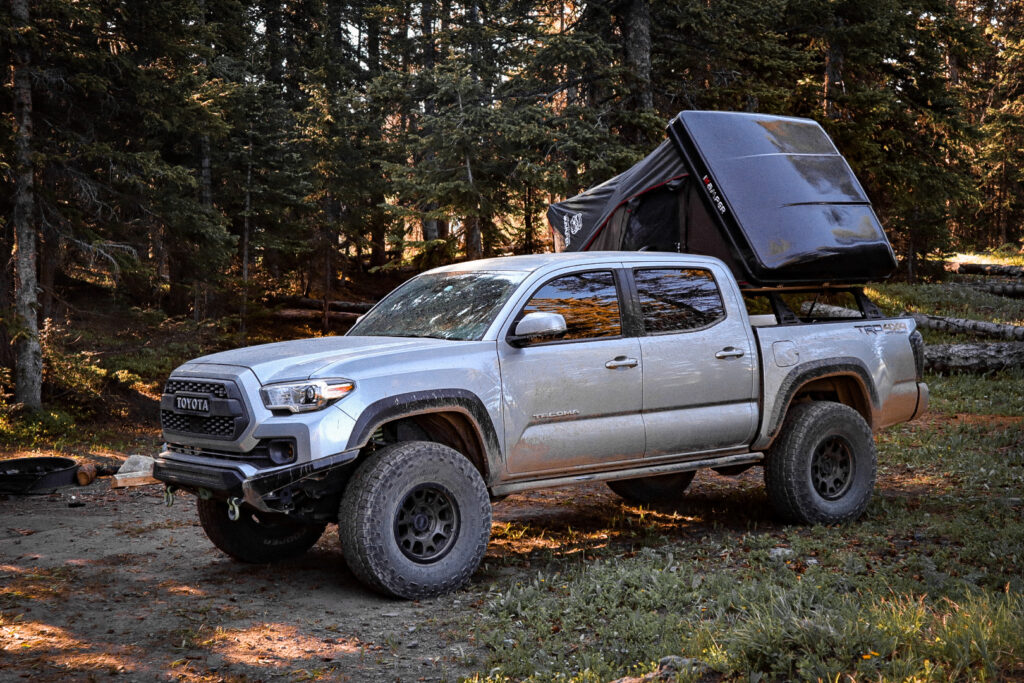
Overlanding Gear Market: The market for overlanding gear, including rooftop tents, portable refrigerators, and off-road equipment, has expanded rapidly. The industry saw a growth of 25% in 2023, with more companies entering the market to cater to the increasing demand.
Overlanding Events and Gatherings: Overlanding events, expos, and gatherings have become more frequent, with a 30% increase in such events in 2023. These events serve as a platform for enthusiasts to connect, share experiences, and learn about the latest in overlanding gear and techniques.
Overlanding In Travel Destinations: There has been a shift in popular travel destinations, with more overlanders exploring remote and less-traveled regions. Destinations in Africa, South America, and Central Asia have seen a surge in overlanding travelers, with a 40% increase in 2023.
Regional Breakdown of Overlanding Interest
The United States, with its vast landscapes and diverse terrains, has seen a surge in overlanding interest across various regions. Our analysis of these overlanding statistics, backed by Google Analytics data, provides a visual representation of this trend on the U.S. map. The accompanying U.S. map visually highlights these peak interest areas, offering a clear picture of where overlanding is making its mark. As the trend continues to grow, it’s exciting to see how different regions are embracing the overlanding culture.
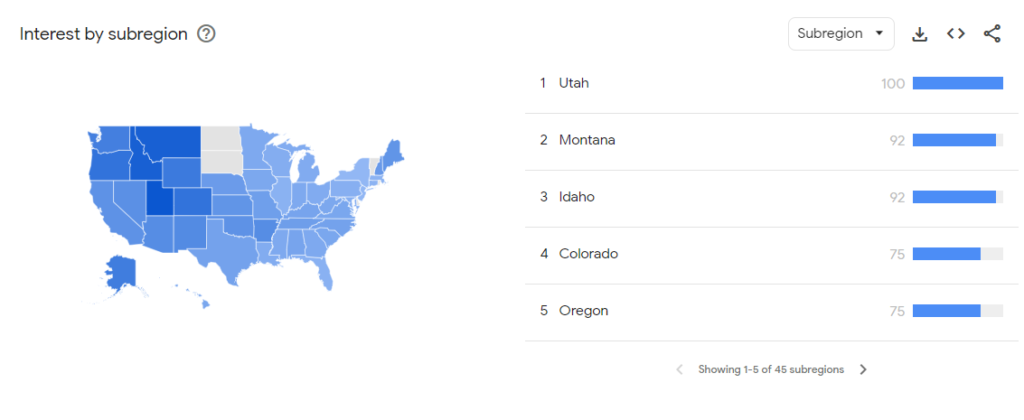
West Coast: States like California, Oregon, and Washington lead the pack, with their scenic coastal routes, national forests, and desert landscapes being a magnet for overlanders.
Mountain States: Colorado, Utah, and Wyoming are hotspots for overlanding, thanks to the Rocky Mountains and numerous off-road trails that offer challenging terrains and breathtaking views.
Southwest: Arizona and New Mexico, with their unique desert landscapes and historical sites, have seen a steady rise in overlanding activities.
Midwest: Surprisingly, states like Missouri and Illinois are catching up, with more enthusiasts exploring the vast plains and forested areas.
East Coast: While traditionally not the first choice for overlanders, states like North Carolina, Virginia, and Pennsylvania are witnessing increased interest, especially in the Appalachian regions.
Economic Impact of Overlanding
Market Size and Business Opportunities:
The overlanding market has been growing steadily over the past few years. In 2023, the global overlanding market size is estimated to be worth several billion dollars.
The rise in popularity of overlanding has led to an increase in the number of businesses catering to this niche. This includes manufacturers of overlanding gear, event organizers, and tour operators.
There’s a noticeable trend of traditional automotive companies entering the overlanding sector, either by launching rugged vehicles suitable for overlanding or by collaborating with existing overlanding brands.
Overlanding Gear Sales:
The sales of overlanding gear, including rooftop tents, off-road trailers, and other related equipment, have seen a significant boost. The demand for high-quality and durable gear is on the rise, with consumers willing to invest in premium products.
Companies that offer innovative and unique products, especially those that enhance the overlanding experience, are seeing higher sales figures.
Event Attendance:
Overlanding events, expos, and conventions are attracting a large number of attendees. These events serve as a platform for enthusiasts to connect, share experiences, and discover new products.
The number of overlanding events has increased, with several being held annually in different parts of the world. The attendance figures for these events are in the thousands, indicating the growing interest in this activity.
Industry Growth:
The overlanding industry is expected to continue its growth trajectory in the coming years. The increasing interest in outdoor activities, coupled with the desire for unique travel experiences, is driving this growth.
The industry is also benefiting from the rise of social media, with overlanders sharing their adventures and inspiring others to take up the activity.
In conclusion, the overlanding sector presents numerous business opportunities, and its economic impact is evident in the growth of related industries. As more people embrace the overlanding lifestyle, the demand for related products and services is expected to increase further.
Factors Driving the Overlanding Boom
Overlanding, once a niche activity, has now become a mainstream travel trend. Several factors have contributed to this boom, making it a favorite among adventure seekers and nature lovers. So why is overlanding so popular? Here’s a closer look at the driving forces behind the overlanding surge:
Influence of Global Events
- COVID-19 Pandemic: The pandemic has had a profound impact on the way people travel. With international travel restrictions and a desire to avoid crowded places, many turned to overlanding as a safer and more isolated way to explore. The self-sufficient nature of overlanding, where travelers can be in their own vehicles and camp in remote areas, became an attractive option during these uncertain times.
- Economic Factors: The economic downturn caused by the pandemic led many to seek cost-effective travel options. Overlanding, which often requires just a vehicle, some basic equipment, and the open road, became a budget-friendly alternative to traditional vacations.
The Role of Social Media and Influencers

- Sharing Adventures: Platforms like Instagram, YouTube, and TikTok have become hubs for overlanders to share their journeys. Stunning visuals of remote landscapes, camp setups, and off-road challenges have garnered millions of views, inspiring others to embark on similar adventures.
- Influencer Impact: Prominent overlanding influencers have played a pivotal role in popularizing this form of travel. Their detailed guides, gear reviews, and travel stories provide valuable insights for both novice and experienced overlanders.
- Online Communities: Overlanding forums, Facebook groups, and other online communities have become platforms for enthusiasts to connect, share experiences, and seek advice. These communities have fostered a sense of camaraderie among overlanders, further boosting the trend.
- Educational Content: The rise of overlanding workshops, webinars, and online courses has made it easier for individuals to learn the essentials of overlanding. From vehicle modifications to survival skills, these resources have equipped many with the knowledge to start their overlanding journey.
Conclusion: The Rising Trend Captured in Overlanding Statistics
The comprehensive dive into overlanding statistics reveals a narrative that’s hard to ignore. Overlanding isn’t just a passing fad; it’s a travel movement that’s gaining momentum with each passing year. From the intricate regional interest breakdowns to the undeniable economic impacts, these statistics underscore the growing significance of overlanding in the travel sector.
The global events of recent years, particularly the COVID-19 pandemic, have reshaped travel preferences, and overlanding has emerged as a resilient and appealing choice. Social media’s role in amplifying this trend cannot be understated, with influencers and everyday adventurers alike sharing their journeys and inspiring a new generation of overlanders.
For those in the travel industry, bloggers, or enthusiasts, these insights offer a valuable perspective on where overlanding stands today and its trajectory for the future. If you found this analysis insightful and wish to reference it in your content, please consider linking back to our article. Collaborative efforts like these help spread knowledge and foster a stronger overlanding community.
By sharing, referencing, and linking to our in-depth look at overlanding statistics, we can collectively elevate the discourse around this exciting travel trend. Let’s drive the narrative forward, together.


